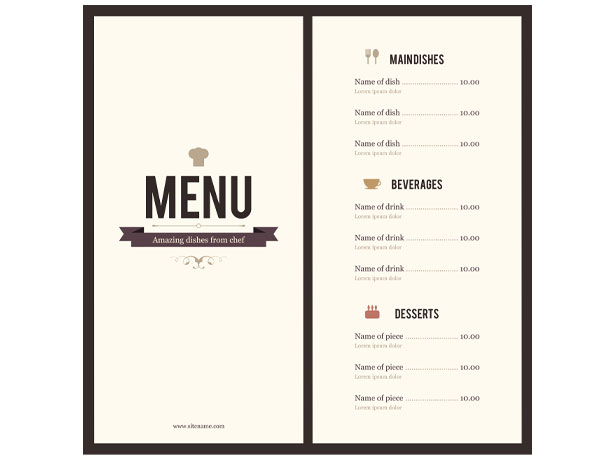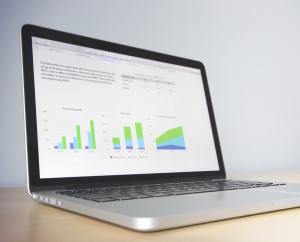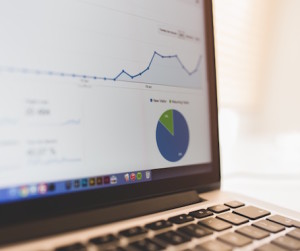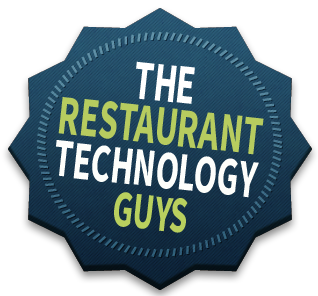How boring is that? Your restaurant is a place where people come together. They are looking for an experience. A menu with this glorified shopping list detracts from the overall experience each of your dishes provides. Good descriptions can set your establishment apart, take your food out of the realm of being a commodity, and lead to higher profits.

Photo Credit: Food Network
Did you know that customers spend an average of just 90 seconds to choose what they want to eat? By placing the most important information in your dish’s description up front you allow customers to skim a greater portion of your overall offerings, thus giving them the ability to order a larger number of items or order faster. Do you know how to deal with ingredients that most customers are not familiar with? Description length? Do you know the pros and cons of using photographs to help describe your menu items?
To answer such questions, our friends over at Menu Cover Depot worked with long-time menu engineer Gregg Rapp to create a how-to guide that presents a set of best practices that restaurant owners can follow to create strong descriptions. When done right, your descriptions will look nothing like what your customers see from your competition.
You can check out that post here.
Happy reading!
Welcome to the first installment of a three-week series where we’ll discuss three restaurant technology trends that have the potential to really benefit your business. Today we’ll dive into the Internet of Things (IoT) and how it can help your business save money and be more efficient.
So what exactly is the Internet of Things?
Imagine that the equipment in your business isn’t just a collection of cold, hard machines with exoskeletons of polished metal, limbs of plastic, and guts of wire. Imagine that the electronics, sensors, software and network connectivity nestled inside your equipment is a latent neuro-center full of information just waiting to be tapped for the greater good of the whole?
What if the machines woke up and started talking to each other – and to you?
Simply put, IoT is the concept of connecting any device with an on/off switch to the Internet and/or to each other, enabling objects (“things”) to collect and exchange data… and to pass that data on to you.
How does this apply to the restaurant industry? The kitchen has become one of the new frontiers for technological advances. IoT has applications for refrigeration, lighting, fryers and most, if not all, new commercial kitchen equipment.
To put the technological capabilities into perspective, a manager can remotely monitor ovens and other cooking equipment so that cooking efficiency is optimized and consistent product quality is maintained. Sensors embedded into each piece of equipment wirelessly send data to the cloud, where it is analyzed and can then generate alerts and recommendations which are transmitted to computers and mobile devices.
The value of the IoT for restaurants is in effectively using the large amounts of data gathered by sensors to respond quickly to potential problems and issues in real time. Responses could include:
Additionally, the IoT can check energy usage and temperatures of HVAC equipment and obtain real-time notice of problems. By monitoring performance through advanced analytics and access to internal HVAC diagnostics, the IoT can reduce maintenance costs and help avoid system failures. And since food safety and product quality require constant vigilance, the IoT is a great vehicle for ensuring that these key factors are being addressed at all times.
The promise with the IoT is that it can empower restaurateurs to slash operating and maintenance costs and help avoid equipment failure – all proactively, and in real time.
We hope this explanation about the IoT has you just as excited as we are about its capabilities and potential. If you have a story how the IoT has impacted your business, we would love to hear about it in the comments.
Thank you for reading and join us next week as we continue our series and dive into big data. See you next time!
Need to pass the time before our next post? Call on Custom Business Solutions for all your restaurant technological needs.
 Restaurant operators know that controlling labor spending is vital to maintaining profitability. High turnover rates, government regulations and growing labor costs make it more important than ever to effectively manage these outlays.
Restaurant operators know that controlling labor spending is vital to maintaining profitability. High turnover rates, government regulations and growing labor costs make it more important than ever to effectively manage these outlays.
Improving the usage and efficiency of your restaurant’s labor force is a lot easier with the right system for labor management. If you are ready to upgrade your labor management system, the Restaurant Technology Guys have a list of five elements to look for while you shop around.
 There isn’t much use in upgrading your labor management system if it doesn’t improve upon your previous program. The right system for your restaurant should include features like:
There isn’t much use in upgrading your labor management system if it doesn’t improve upon your previous program. The right system for your restaurant should include features like:
If your current system lacks any of these features – which is only a partial list of the benefits available from newer labor management programs – an upgrade could save you from hours of future headaches while you manage your staff’s hours.
Your new labor management system should do more than an older program – but it should also make it easier to complete tasks as well.
By incorporating sales data and historical information into your scheduling, you’ll be able to anticipate labor needs and schedule more efficiently.
The POSitouch system from CBS Northstar, for example, offers two different methods for scheduling employees based on restaurant data. The first is a budget-based scheduler, which relies on labor cost dollar and percentage targets to identify labor needs. The second, a forecast-based scheduler, uses historical data and staffing guides to develop scheduling targets. Both formats are graphical and use techniques like drag-and-drop to simplify the process.
 Making a schedule for your staff shouldn’t require hours at an outdated computer in a cramped back office. Among the benefits of cloud-based restaurant management solutions is the ability to access your POS system from any Internet-equipped device, including smartphones, tablets, and laptops.
Making a schedule for your staff shouldn’t require hours at an outdated computer in a cramped back office. Among the benefits of cloud-based restaurant management solutions is the ability to access your POS system from any Internet-equipped device, including smartphones, tablets, and laptops.
Moving your labor management system to the cloud will also make it easier for employees to trade shifts – they can see the schedule from their own devices and communicate with co-workers to adjust their schedules.
The tracking data available in your updated labor management program can also help you prevent hours overages among your team. Real-time monitoring of employee hours will allow you to make sure that workers are not surpassing 30 hours a week, which would qualify them as full-time staff who are eligible for health care benefits.
Labor tracking information also helps reduce overtime. You can set up notifications that will alert you to workers who are close to exceeding their hours limit, which helps managers cut hours during slower periods earlier in the week.
 Cloud-based operations programs, including Software as a Service (SaaS) systems, are designed to protect your information with high-level encryption. Unlike on-site computers in a traditional POS system, which save complete payment and customer data and can be breached by hackers, cloud-based systems don’t require credit card data storage.
Cloud-based operations programs, including Software as a Service (SaaS) systems, are designed to protect your information with high-level encryption. Unlike on-site computers in a traditional POS system, which save complete payment and customer data and can be breached by hackers, cloud-based systems don’t require credit card data storage.
And speaking of storage: on-premise computers are eventually limited by a finite amount of storage space. Restaurant managers will eventually have to offload data to a backup hard drive to keep operations running at full capacity.
In contrast, SaaS systems that operate “in the cloud” have access to unlimited storage capacity. Also, moving your data to the cloud will protect you in the event of an accident or emergency that damages your on-site hardware.
 We are pleased to announce that Custom Business Solutions Marketing Manager and Restaurant Technology Guys blogger Ryan Williams has published an editorial in September’s Business Solutions Magazine.
We are pleased to announce that Custom Business Solutions Marketing Manager and Restaurant Technology Guys blogger Ryan Williams has published an editorial in September’s Business Solutions Magazine.
The editorial is titled “5 Reasons Your Restaurant Clients Need IT Solutions Born in the Cloud.”
Ryan says that “born-in-the-cloud solutions can capitalize on the agility, flexibility, and scalability of cloud computing, deliver a seamless user experience for customers and staff alike, and provide ongoing improvements and innovation.”
Ryan goes on to explain that raising awareness of the benefits available through born-in-the-cloud solutions can ease restaurant owners’ fears about cloud solutions, and keep them on the cutting edge of efficient operations.
Read the entire post for yourself by clicking the link below.
 Big Data is a buzzword in the tech industry that is confusing to some and annoying to others. Either way, the opportunities available in Big Data for restaurants have become too big to ignore.
Big Data is a buzzword in the tech industry that is confusing to some and annoying to others. Either way, the opportunities available in Big Data for restaurants have become too big to ignore.
Ars Technica defines Big Data as “the entire process of gathering and storing tremendous amounts of data, then applying tremendous amounts of computing power and advanced algorithms to the data, in order to pick out trends and connect dots that would otherwise be invisible and un-connectable within the mass.”
Kenneth Cukier, data editor for The Economist, explains in a TED Talk what Big Data is and the applications for businesses and the general population. Cukier is optimistic about the future that Big Data can provide but cautious about the potential results. Today, Big Data for us is what fire was to prehistoric man: “This is a tool,” Cukier says, “but this is a tool that, unless we’re careful, will burn us.”
You probably use the most successful application of Big Data every day: Google. When users search through Google, they are actually searching Google’s index of the internet, not the internet itself. Google’s algorithm considers the content of the search, as well as the user’s location and other peripheral data, to provide the best results from their archive of links.
In an excellent white paper released in February, the National Restaurant Association said that “the data from your POS, marketing, accounting, inventory and scheduling systems is a vein of gold just waiting to be mined. Now your establishment can benefit from the same predictive analytics and business insights previously reserved for the likes of Amazon or Google.”
Big  Data for restaurants can come from a variety of channels, including customer loyalty programs, email opt-ins, social media engagement and more.
Data for restaurants can come from a variety of channels, including customer loyalty programs, email opt-ins, social media engagement and more.
Restaurateurs can look at information from individual customers and identify their order history, their favorite dishes, how often they visit, what they are willing to spend and their preferred method of payment. Customer profiles can also include age, gender, zip code, and other relevant personal data.
The better you and your team become at accessing and analyzing information from your restaurant or franchises, the better you will be able to manage and improve your operation. Collecting and analyzing data within the context of your restaurant will allow you to anticipate guest behaviors, desires and trends more accurately. Breaking down Big Data into useable information can lead to menu updates and improvements, service or delivery changes, and other unexpected opportunities.
According to the New York Times, companies small and large are combining Big Data with business intelligence software to track inventory, staff efficiently and determine profit margins. Restaurants are using these systems with their internal and external data to enhance the dining experience, reduce costs, and maximize their return on marketing.
 Many restaurateurs are excited about the possibilities available with this data, and we feel the same way (we are the Restaurant Technology Guys, after all.)
Many restaurateurs are excited about the possibilities available with this data, and we feel the same way (we are the Restaurant Technology Guys, after all.)
Modern restaurant POS systems already include a version of big data analysis. The POSitouch system, for example, includes two graphical schedulers based on accumulated data. One is based on labor cost dollar and percentage targets, the other on forecasts developed with historical data and staffing guides.
Big Data for restaurants isn’t just a new tool for management to use or ignore – it’s changing the entire industry. Collecting and applying customer information will be necessary to stay on top of your marketplace, because if you don’t, your competitors certainly will.
There have been so many questions flooding our inboxes at The Restaurant Technology Guys blog and Custom Business Solutions that we felt it would just be easier to sit down and record a short video to address some of the most common questions. EMV is such a big deal right now and there is so much uncertainty as to what that means for the restaurant industry that we had plenty to talk about. Below are the questions we addressed in the vlog, but if you have any questions we didn’t address on the video, feel free to tweet us at @RestTechGuys or email us to have all of your questions answered… Or you’ll at least get our best effort! Be sure to keep up with us on social media, as we’ll be updating the status of EMV as the October 1st deadline quickly approaches.
